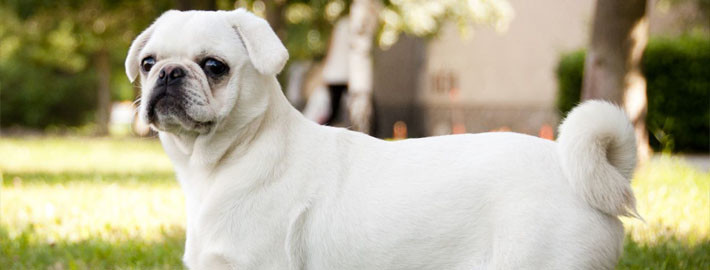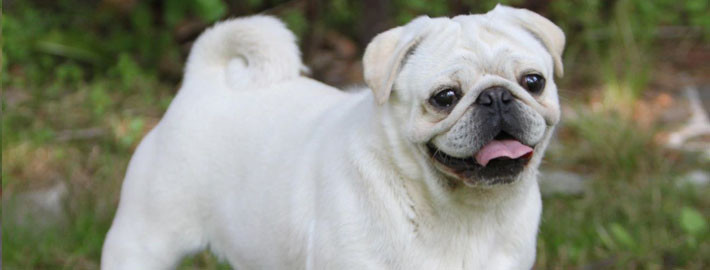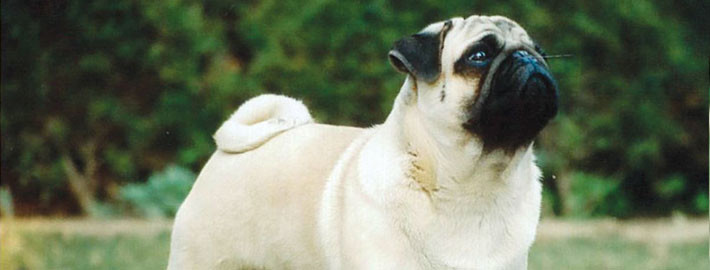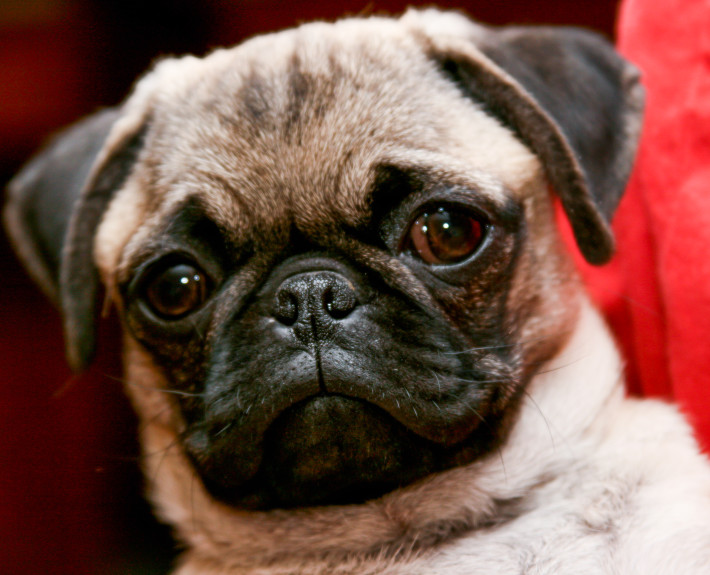What makes the Pug Unique?
Mixing comedy and dignity in equal amounts, this breed makes a wonderful companion. Pug can be stubborn but they are usually pleasant accomplices that like nothing better than to show off.
Page Contents
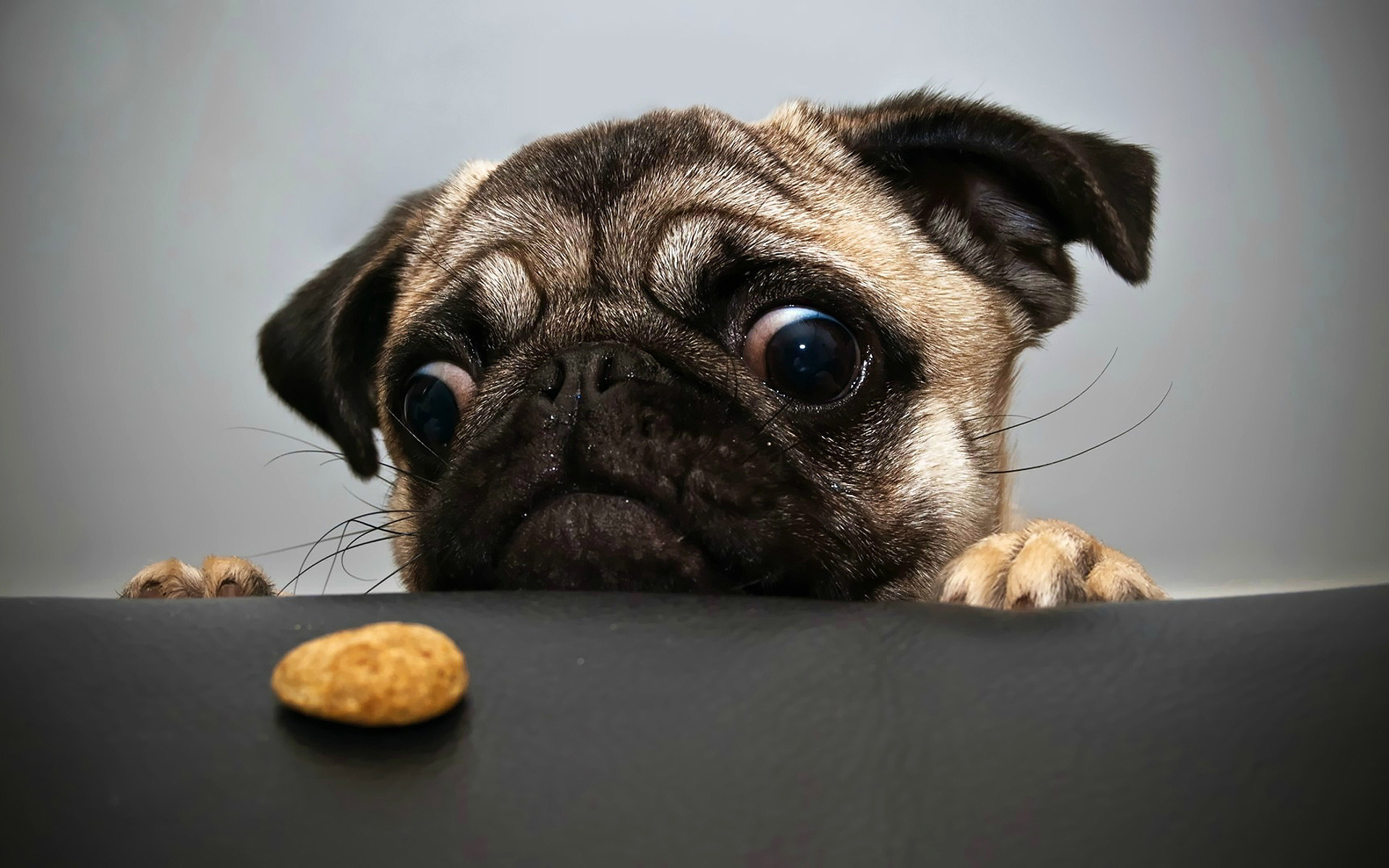
Is the Pug Right For You?
Pugs are small but stocky dogs with square shaped bodies. These strong animals have short, straight limbs as well as deeply wrinkled foreheads and faces. Their small statures and minimal exercise allows pugs to be excellent apartment dogs but they are adaptable to many different living situations. Pugs are drawn to people and their sturdy build makes them good companions for even the smallest of children. They are a very friendly and outgoing breed. However, when they have had enough company or grow tired of their human companions, this breed has been known to wander off.
training Pugs is relatively easy because they strive to please their owners. As with any breed, regular exercise will prevent this breed from becoming overweight. These dogs love briskly paced games.
In 5 Words
- Charming
- Docile
- Quite
- Attentive
- Playful
Characteristics
Learn About the Pug
Description
General Description
Pugs are small but stocky dogs with square shaped bodies. These strong animals have short, straight limbs as well as deeply wrinkled foreheads and faces. These dogs move with a slightly rolling and jaunty gait. Pugs have mild, friendly expressions in their extremely large, dark eyes. They are said to have expressive little faces. Rounded heads with short muzzles are another breed features. Moles on the cheeks of this breed are considered to be attractive. These dogs should have bites that are somewhat undershot. Rose or button shaped ears are another common feature. Pugs have high set, curly tails and double-curled tails are given preference in show dogs. While the breed has dewclaws, these are typically removed.
Size
All Pugs should stand between 10 and 11 inches at the withers and should weigh between 14 and 18 kilograms.
Coat
Pugs have a short coat with a smooth texture. These dogs are available in fawn, white, and black. They also come in brindle, including silver and apricot types. Members of this breed typically have a dark colored mask over their face.
Short History of the Pug
Pugs can trace their history back to the pre-Christian era in China. These dogs were prized both by monks and Imperial royalty. As canine members of the Emperor’s family, these pets enjoyed a lavish lifestyle that even extended to being guarded by soldiers. The Chinese eventually created three short nosed breeds: the Pekingese, the lion dog, and the “foo dog”. Modern Pugs can trace their lineage back to the Foo dogs of yore.
This breed migrated first to Japan and then to Europe. Dutch traders are credited with bringing Pugs to Holland and the royal family thereof then transported the breed to England when they changed residences. One pug in particular was noted for its efforts in saving the life of William of Orange by alerting the royal to the presence of his enemies.
The modern Pugs owe much of their current traits to the development they underwent in Britain. These dogs subsequently became popular with monarchs and members of the aristocracy all over Europe. Pugs were recognized by the American Kennel Club as early as 1885, but the dogs’ popular begun to diminish shortly thereafter.
Thanks to the work of several breeders, the dogs didn’t disappear entirely. Pugs eventually made a comeback in the States and the Pug Dog Club of America was founded in 1931. They have since grown steadily in popularity but are neither a rare nor a common breed.
Temperament
Their small statures and minimal exercise allows pugs to be excellent apartment dogs but they are adaptable to many different living situations. Pugs are drawn to people and their sturdy build makes them good companions for even the smallest of children. They are a very friendly and outgoing breed. However, when they have had enough company or grow tired of their human companions, this breed has been known to wander off. These dogs are also known to have a particular favorite among the embers of their human family, usually the person that feeds them, but they are not one-person dogs. Members of this breed also get along well with other animals. Pugs rarely display any aggression towards other animals or humans, which makes them an ideal pet for many different types of families.
Caring for Your Pug
General Health
Pugs are born in litters of 2 to 5 puppies and these dogs generally live an average of thirteen years. Members of this breed have a shortened nose that causes them to be at risk for breathing difficulties. Eye conditions such as entropion and proptosis are also known to affect this breed.
There are a number of hereditary disorders that are common in Pugs. Necrotizing meningoencephalitis is a severe health concern in a pug’s youth as this ailment can cause a dog’s brain to become inflamed. The problem will usually show up before the dog in question reaches seven years old. Hemivertebrae, or a deformed spine, is another serious ailment that can result from the same genes that give these dogs their curly tails. This problem usually manifests when puppies are in the process of growing up.
It also goes without saying that Pugs who don’t get enough exercise or those that overeat have a tendency to become obese. The facial wrinkles on this breed require regular cleaning to prevent debris from accumulating in the folds and causing health problems.
Care
Daily
The wrinkles on a pug’s visage can easily trap harmful dirt and debris. Messier dogs should have their face cleaned on a daily basis but for others a few times a week is enough. Pugs also need a short walk every day.
Weekly
Cleaning a dog’s teeth a few times a week will keep it from having bad breath and prevent periodontal disease from taking hold later on.
Monthly
Most flea, tick, and heartworm prevention medications should be administered on a monthly basis for best results.
Grooming & Bathing
Although Pugs do shed heavily at certain times of the year, they do not need a lot of grooming otherwise. Owners can simply comb their dogs as needed with a bristle brush. It is also a good idea to keep the dog’s toenails trimmed to avoid injuries that can arise as a result. Pugs should be bathed only when necessary and carefully dried off to prevent them from getting cold.
Exercise & Training
Aside from housebreaking these dogs, training Pugs is relatively easy because they strive to please their owners. As with any breed, regular exercise will prevent this breed from becoming overweight. These dogs love briskly paced games. However, owners should take care not to let their pets overexert themselves. Pugs may start to wheeze and breathe heavily if they get overheated. This breed is incredibly intolerant of heat and needs to live indoors in warm climates.

